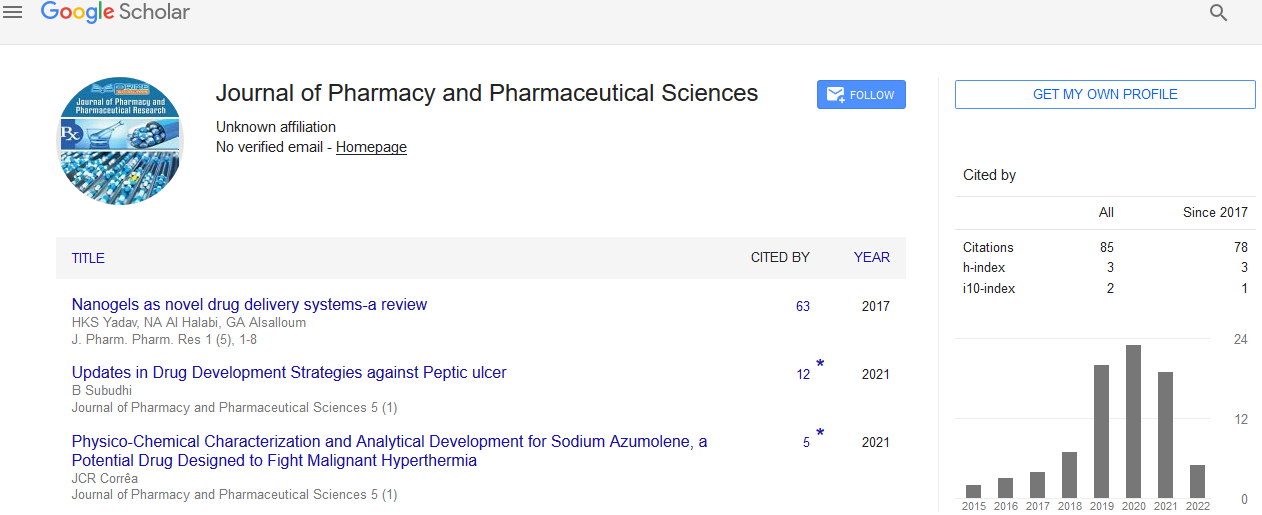Commentary Article - (2022) Volume 6, Issue 2
The Process of Pharmaceutical Formulation and Its Type
Amyan Wein*
1Department of Pharmacy, University of Rajshahi, Bangladesh
*Correspondence:
Amyan Wein, Department of Pharmacy, University of Rajshahi,
Bangladesh,
Email:
Received: 29-Mar-2022, Manuscript No. IPIPR- 22-13398;
Editor assigned: 31-Mar-2022, Pre QC No. IPIPR- 22-13398(QC);
Reviewed: 14-Apr-2022, QC No. IPIPR- 22-13398;
Revised: 19-Apr-2022, Manuscript No. IPIPR- 22-13398(R);
Published:
26-Apr-2022, DOI: 10.21767/ipipr.6.2.08
Description
Definition of a Pharmaceutical, a drug, a cycle in which different
compounds, including flexible drugs, are combined to form a final
therapeutic substance. The word information is often used
in a way that combines the structure of measurement. Definitive
research includes promoting a strong and GOOD drug plan
for the patient. With oral contraceptives, this usually involves
mixing the drug in a tablet or container. It is important to make
the difference that the tablet contains an assortment of other
potentially silent substances isolated from the original drug,
and studies should be completed to ensure that the epitomized
drug works with these different substances in a harmless way.
The type of damage, whether it is near or around. Preliminary
formulations include exposure to physical, synthetic, and mechanical
properties to determine which materials (accessories)
should be used in the system. In the management of a protein
pre-plan, an important angle is to understand the behavioural
structure of a given protein under a variety of stress conditions
such as freezing / freezing, temperature, shear pressure among
others to disassemble the corrosive tools and consequently its
softness. Planning is based on that and considers factors such
as molecular size, polymorphism, pH, and melting, as this may
affect the bioavailability of the drug as well as the dynamics of
the drug. The drug should be combined with subtle fixation in a
way that ensures that the available dose is reliable in all dosage
units for example in all pills. The scale should have the same
appearance, with adequate flavor, tablet hardness, and case
crunch. It is unlikely that descriptive studies will be completed
at the beginning of the clinic. This means that specific preparations
are initially developed for use in the first phase of the
clinic. This usually involves hand-filled cases containing a small
amount of the drug and diluent. Proof of the safety of these
programs is not required, as they will be used (tried) with astonishing
speed. The thought should be given to what is known
as the “drug combination” - the part of the drug that is flexible
in the complete components of the component. Low drug load can cause homogeneity problems. A large load of drugs
may cause distribution problems or require large containers in
the event that the compound has a low thickness. Once stage
III treatment steps were achieved, a drug plan should be developed
to be closer to the readiness to be used in the final
analysis. Information about safety is important at this stage,
and circumstances are likely to be created to ensure that the
treatment is appropriate. Considering that the drug shows instability,
you will contradict the results from the clinical launch
as it can be difficult to know what the control component really
was. Security reviews are completed to determine whether
temperature, mugginess, oxidation, or photolysis (bright light
or visible light) make any difference, and the configuration is
checked to determine if any degradation factors have been altered.
Scheduled medicines are placed in the final framework
of the commission for extended periods. CONCLUSION
These include rankles, bottles, containers, ampoules, needles,
and cartridges. The rooms can be manufactured using an assortment
of materials including glass, plastic, and metal. The
medicine may be stored in a solid, liquid, or gas. It is important
to check if there is any unwanted connection between the layout
and the component. For example, when it is assumed that
a plastic handle is used, tests are performed to determine if
any repairs are advertised in the plastic, and that any plastics,
oils, dyes, or solvents are filtered into the plastic. Indeed, even
room name glue should be tried, to ensure that they do not
remove the plastic holder to fit.
Acknowledgement
The author is grateful to the journal editor and the anonymous
reviewers for their helpful comments and suggestions.
Conflict of Interest
The author declared no potential conflicts of interest for the
research, authorship, and/or publication of this article.
Citation: Amyan W (2022) The Process of Pharmaceutical Formulation and Its Type. J Pharm Pharm Res Vol.6 No.2:08
Copyright: © Amyan W. This is an open-access article distributed under the terms of the Creative Commons Attribution License,
which permits unrestricted use, distribution, and reproduction in any medium, provided the original author and source are
credited

